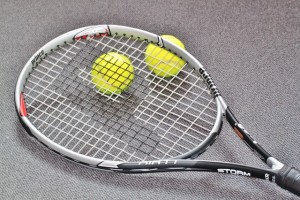PPC Newlands, who boasts the most impressive attendance figure of all domestic grounds for international matches, have launched a ground-breaking initiative in association with the leading cellular network Vodacom to dramatically increase the fan experience at the iconic venue.
Vodacom invested R3.6 million to deploy a spherical antenna on top of the PPC Newlands cricket scoreboard to ensure fast and reliable data services. Its ingenious use of an old technique dating back to the 1940’s, delivered remarkable and instant results.
The newly implemented device was successfully used for the first time at the One Day International between South Africa and Australia on the 12th October and more of 99.9 percent of the voice calls were success, as overjoyed South African fans shared the news of South Africa’s unprecedented whitewash of the Baggy Greens.
There were an especially low number of dropped calls for such a busy day, an incredible feat.
This delivers on Vodacom’s commitment to be the network with the lowest number of dropped and the best data experience amongst mobile service providers, said Alberts Breed, Vocacom’s managing director in the Western Cape.
“People who attend large events want to be able to easily share their experiences with others using social platforms such as Twitter, Instagram and Facebook,” added Breed.
“Traffic has increased exponentially, especially with video coming into the mix, and mobile networks must respond to the demand for faster and better connectivity.
“We want to ensure that when our subscribers attend a large event, they enjoy the same exceptional service they do anywhere else,” he added.
At the Newlands stadium, Vodacom applied an old technique in an innovative manner to make the difference for its customers.
Following the principles of the Luneburg lens theory-which dates back to the 1940s-Vodacom deployed spherical ball antennas to help spectators to enjoy the best possible 3G and LTE experience, explained Breed.
Nabeal Dien, chief executive officer of the Western Cape Cricket Association (WPCA), said the partnership with Vodacom has raised the profile of PPC Newlands.
The venue attracted a record test crowd of 85 320 in the New Year’s test against England in 2016, and saw more than 147 000 spectators move through the turnstiles in the season.
“As an association, we want to increase our offering to each fan so that their experience at the ground resembles that of their home lounge.
“Easy processing of transactions, improved travel arrangements and the expert availability of data secured by Vodacom have ensured that we become an even more attractive venue for spectators.
“Apart from all these factors, the phenomenal atmosphere at the ground and PPC Newlands as a true SA fortress (South Africa boasts a success-rate of 27 wins in 32 One Day Internationals at the ground),” contributes to its popularity.
Breed said Vodacom has developed a solution that delivers superior signal to noise levels and focused network delivery to each mobile, meaning that you’ll notice a definite improvement in the speed and quality of your connection.
The high density of the crowd at large sporting venues has always placed mobile networks under immense pressure.
The traditional approach to addressing the performance challenge is to deploy distributed antenna systems (DAS). It is done by placing multiple antennas in strategic places to distribute network coverage throughout the venue.
DAS solutions provide consistent and enhanced coverage for indoor and outdoor spaces, despite the difficulties that the construction, terrain and crowds pose.
However, these systems have a large number of overlapping cells, which increases the signal to noise ratio on the radio network. This effect multiplies as more mobile devices join the network, potentially resulting in inferior service when demand is high.
Operators can manage this by adding capacity, but costs may be high.
Consequently, Vodacom applied the principles of the above-mentioned Lunenburg lens theory, with stunning results.









